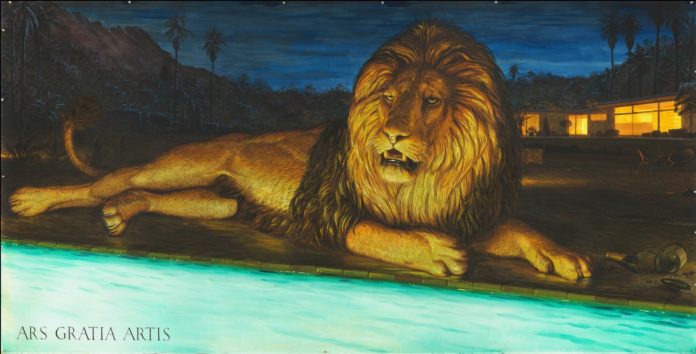The book publisher and collector Benedikt Taschen lives in a John Lautner–designed Los Angeles home dubbed the Chemosphere, and on a late September morning, the Chemosphere was under attack by deep-fanged giant saber-toothed tigers emerging from the tar pits. The creatures came out of the black muck and galloped up the hills, the blinking city behind them, and when they approached the base of the modernist icon of architecture, they found a fair-skinned mountain lion to make prey. Claws out, saliva oozing down teeth, the big cats prepared to feast.

The temporary hang of the works was wonderfully jarring—it was a sunny shock to walk straight in from the hum of Gotham’s West Side Highway and see gigantic paintings so evocative of the California glow. It was still a few weeks before the work would be shipped out to Los Angeles and feted by the town depicted in the paintings.
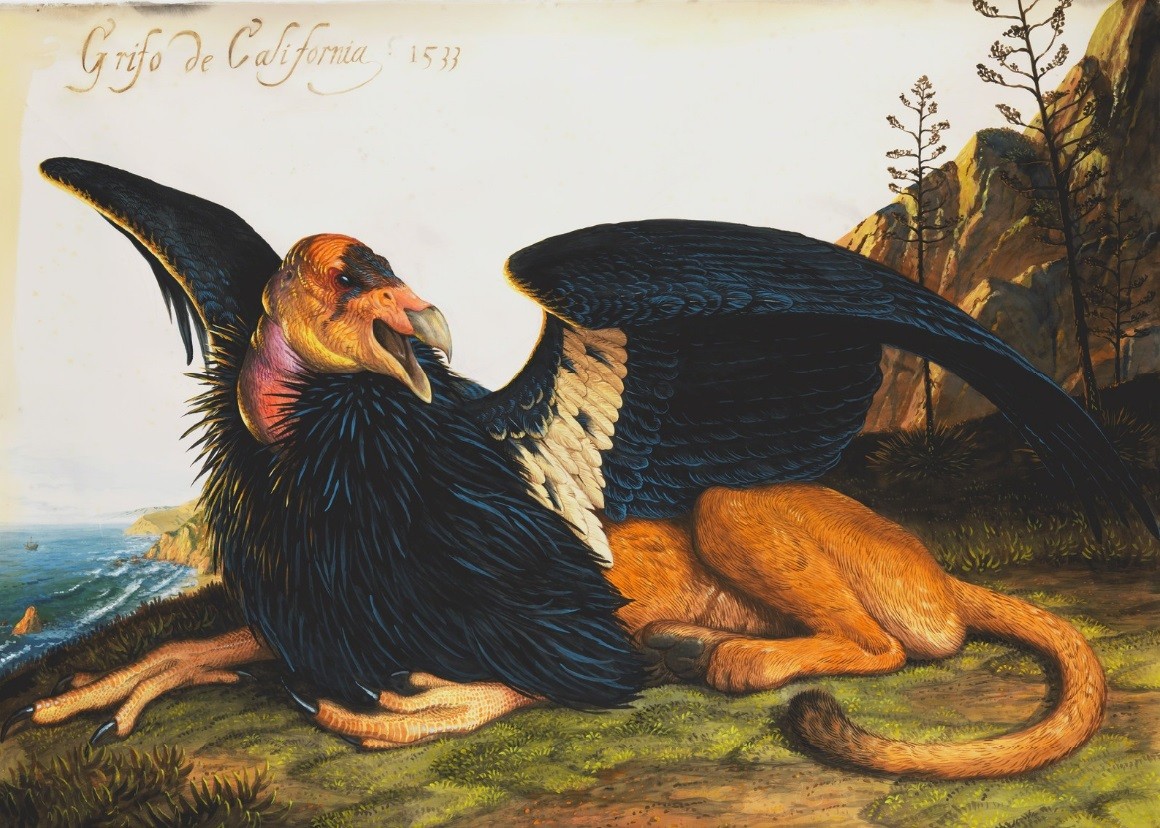
“In the classic Hollywood horror film pitch, I’m saying, the animals rise out of the pits and come and attack contemporary L.A.,” said Walton Ford, who had painted the narrative of rampaging beasts as a masterful triptych called La Brea (2016). Standing in the Gagosian space on West 21st street in New York, looking at the work that would make up “Calafia,” Ford’s show currently up at Gagosian in Beverly Hills through December 16.
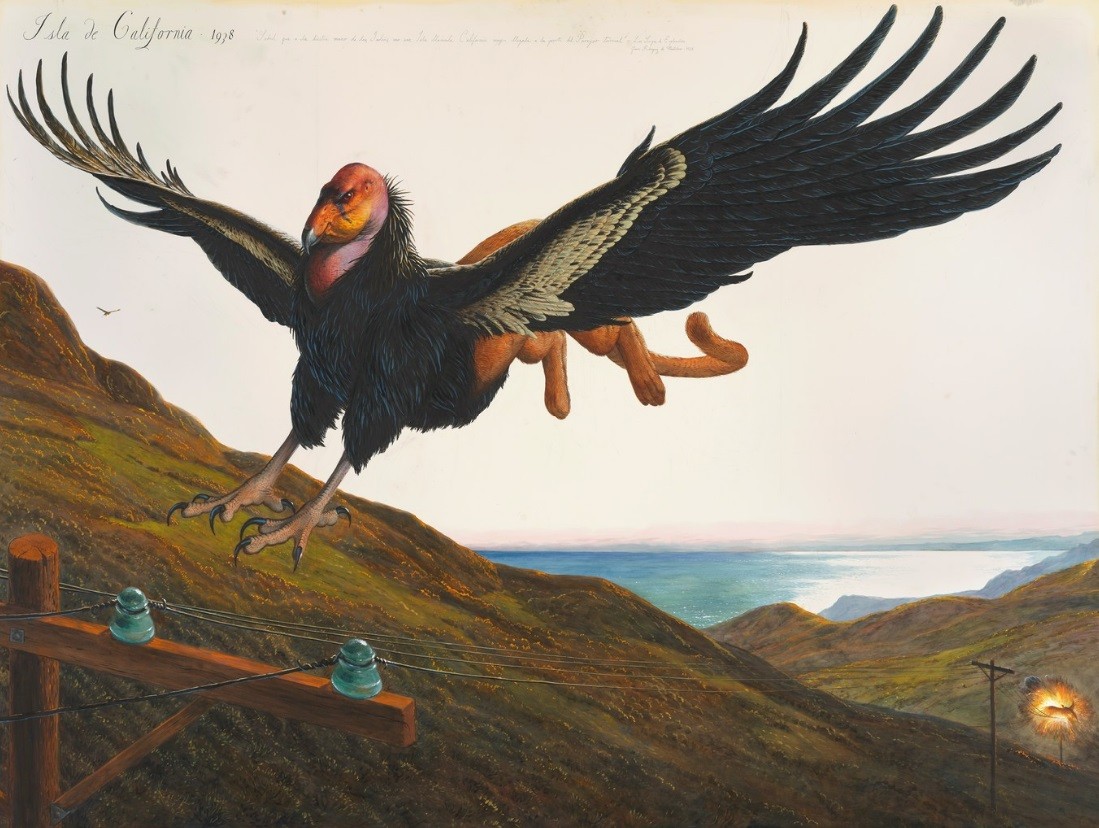
Ford’s practice takes him around the world as he captures natural landscapes in a hyper-realistic style that is cut with a mischievous romantic streak, his superb handling embedded with a wink that brings extinct animals and mythical creatures back in the modern age. But as a native East Coaster, he’s never done a deep dive on the landscape of California. So when the opportunity presented itself a few years back, he decided to investigate the state’s deep mythos, the way in which the initial seizure of Edenic land by the Spanish—a strip of mountain-studded oceanside property sitting seemingly at the end of the world—results today in the Hollywood dream factory and its runoff, the tinseltown you see at the movies.

Ford grew up in upstate New York, went to college at RISD in Providence, Rhode Island, and has lived in New York City for decades; he’s not a West Coast guy, really. But he was curious about the state’s natural phenomena, and with all of the contradictions its landscapes embody, it was too much to pass up.
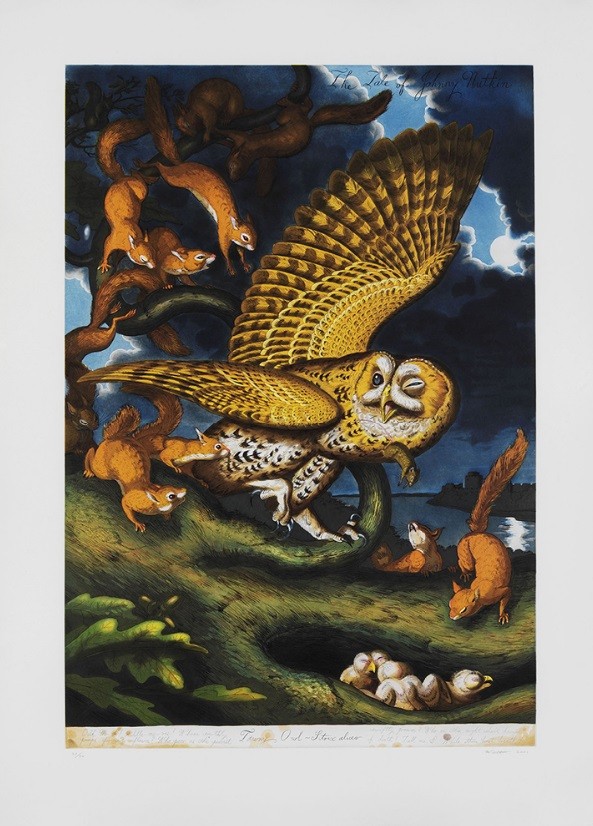
The show begins with Ars Gratia Artis (2017), which contains a familiar image: the MGM lion, the one that’s roared before each one of that studio’s movies since it was founded in the 1920s by the pioneering movie men Louis B. Mayer and Irving Thalberg. In Ford’s painting, the lion who long ago filmed the iconic opening segment is on a lawn, drunk and tired, winding down his days like many a former star: soused in the backyard of a Bel Air mansion as the detritus of endless parties piles up.
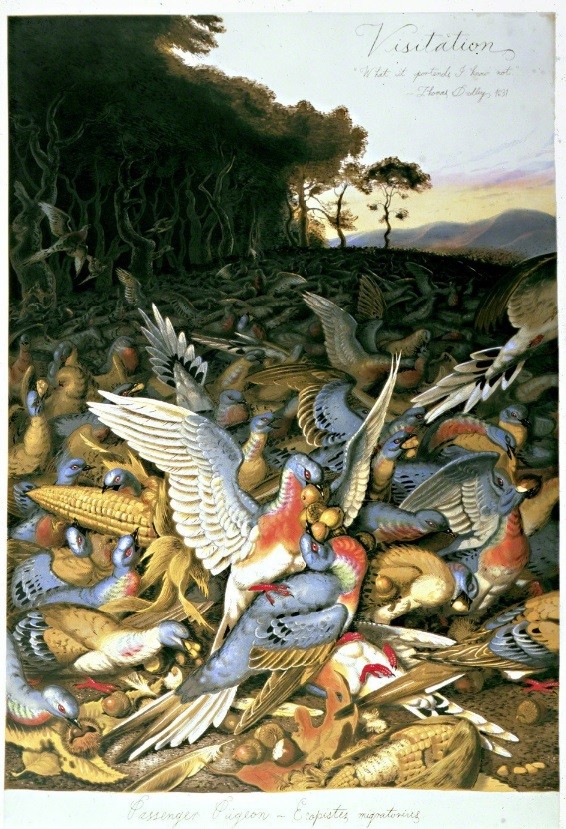
It establishes the show not just as a showcase for Ford’s panoramic depictions of the state’s canyons and ranges and the critters that stalk them, but as an exploration of L.A. ennui. The Gagosian outpost sits in the city’s luxury shopping district but is just feet away from the messy nature in Ford’s paintings. The work is novelistic in the vein of Nathanael West’s 1939 book The Day of the Locust, meta-L.A. like Ed Ruscha. The faded lion is here a cautionary tale of Hollywood, his faced slacked by drink and drug.






